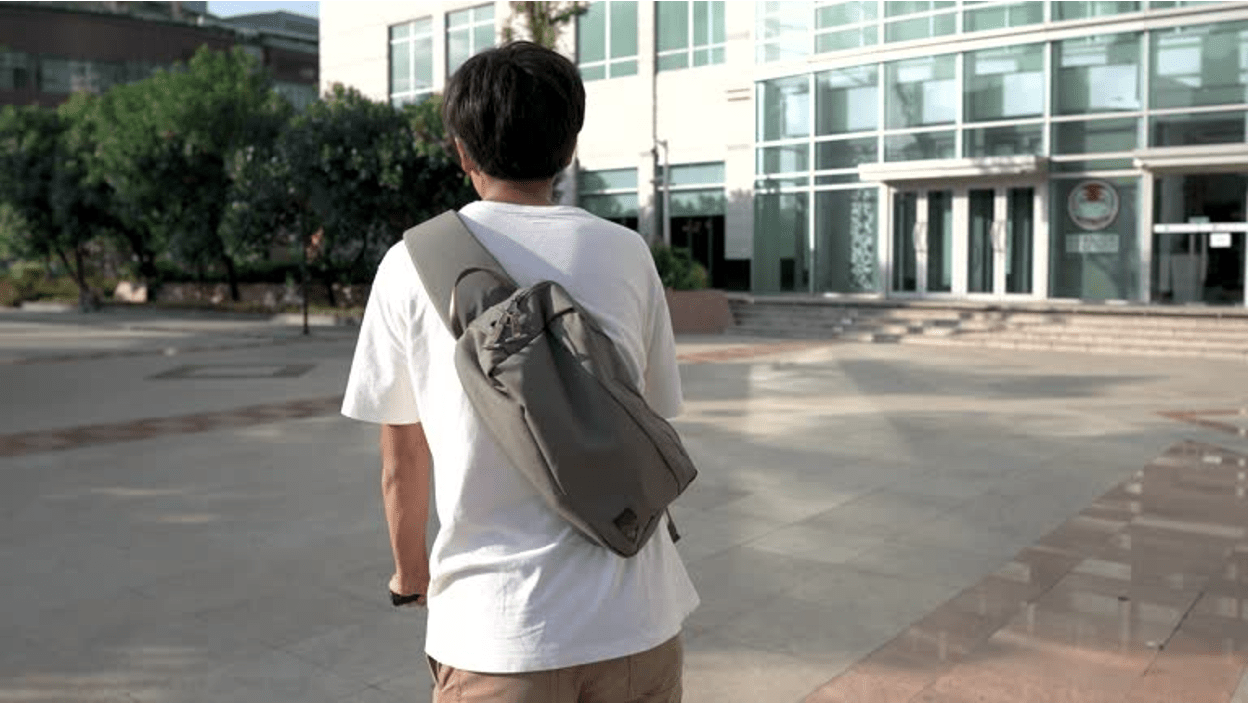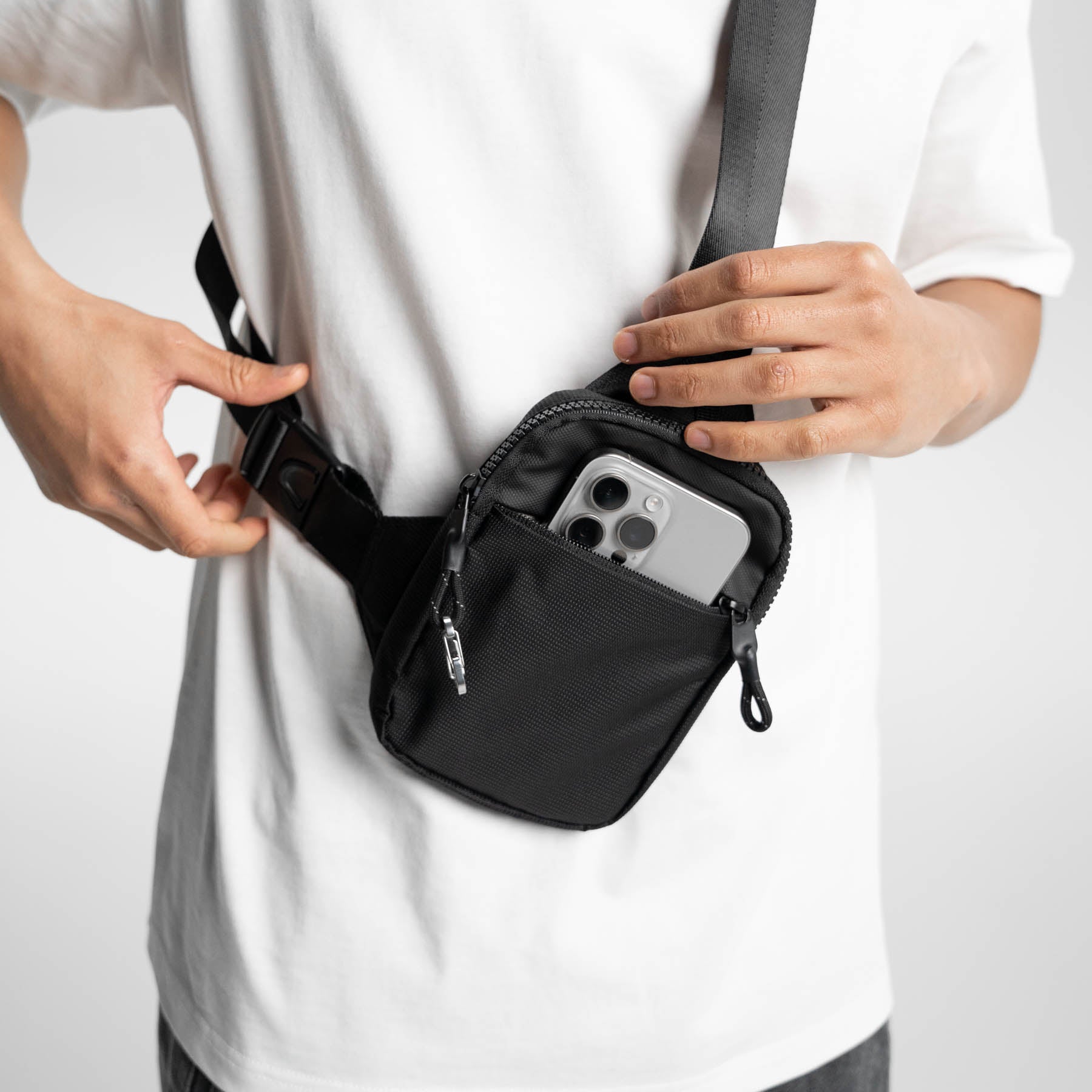Key Takeaways
- Sling backpacks provide excellent back support when kept under 3–4 pounds and worn for shorter durations (4–6 hours maximum).
- The asymmetrical design of sling bags offers quick access and mobility but can cause shoulder strain with extended use.
- Proper positioning and regular shoulder switching are essential for preventing muscle imbalances when using sling backpacks.
- Features like padded straps, ergonomic designs, and correct sizing significantly improve back comfort with sling bags.
- Concept Global's Travel Sling Bag and CG1 models feature pressure-distributing padding, lightweight construction, and anatomically correct positioning for ergonomic comfort, backed by 1,500+ customer reviews and a 60-day satisfaction guarantee.
The Truth About Sling Backpacks & Your Back
That nagging shoulder pain from your sling backpack might be telling you something important. While these sleek, single-strap carriers have surged in popularity for their convenience and style, their relationship with your back health deserves closer examination. The asymmetrical design of sling bags fundamentally changes how weight distributes across your body compared to traditional two-strap backpacks.
Sling backpacks create a diagonal weight line across your torso, which can be both beneficial and problematic. When properly fitted and lightly packed, they allow for natural movement patterns and less restriction. However, this same design concentrates pressure on a single shoulder and creates muscle engagement patterns that differ significantly from our body's expectation of bilateral load distribution.
Understanding these biomechanical realities helps explain why some outdoor enthusiasts swear by their sling bags while others report discomfort after extended use. The difference often comes down to how you use them, what you pack, and your individual body mechanics. Instead of asking whether sling backpacks are universally good or bad for back health, we need to explore when they help, when they hurt, and how to optimize their use for comfort.
|
Modern Anti-Theft Sling Bags for Smart Travelers. High-Quality Basics Without the Hype Tax! Upgrade from bulky backpacks to sleek, secure sling bags with RFID protection and anti-theft features. Join 100,000+ customers who trust our travel solutions. Smart Security Features:
Why Choose Concept Global:
60-Day Money-Back Guarantee: Not satisfied? Full refund, no questions asked. |
When Sling Backpacks Help Your Back

Sling backpacks truly shine in scenarios where mobility matters more than capacity.
Lightweight Carry Benefits
The magic number for comfortable sling bag carry is 3–4 pounds maximum. At this weight threshold, your body easily accommodates the asymmetrical load without triggering compensatory movements that lead to discomfort.
The lightness encourages you to maintain proper posture rather than hunching forward as often happens with heavier traditional backpacks. The slight presence of the strap crossing your body serves as a gentle reminder to keep shoulders relaxed and spine aligned.
This subtle biomechanical cue often disappears with traditional backpacks, where the even distribution can mask poor posture habits until discomfort sets in hours later.
Freedom of Movement Advantages
The single-strap design liberates your range of motion in ways traditional backpacks simply cannot match. When scrambling over rocks, hiking, passing crowded spaces, or quickly transitioning between sitting and standing, the sling bag moves with your body rather than against it.
This freedom reduces the awkward twisting and contortion often required to accommodate conventional packs during dynamic activities.
Quick Access Without Awkward Twisting
Traditional backpacks force you into unnatural positions when retrieving items, often requiring complete removal or awkward reaching that strains your back. Sling bags solve this problem elegantly by allowing a simple forward rotation that brings all contents within immediate reach. This design feature replaces the potentially harmful twisting and contortion that can trigger back pain when accessing conventional packs.
The health benefits of this quick-access design extend beyond convenience. By reducing instances of awkward reaching and twisting, sling backpacks help maintain proper spinal alignment during active use.
When Sling Backpacks Hurt Your Back
Heavy Load Warning Signs

Sling backpacks fundamentally fail as heavy-load carriers and should not be stuffed to their maximum capacity, due to their single-point support system.
When loaded beyond 4 pounds, the concentrated pressure on one shoulder quickly leads to muscle fatigue, potential nerve compression, and compensatory posture changes that stress your spine.
Pay attention to warning signs like persistent shoulder ache, tingling in the arm or hand, or the tendency to hunch toward the bag side—these indicate your sling bag is too heavy.
Long-Duration Wear Problems
Even properly loaded sling backpacks become problematic when worn for extended periods. The 4–6 hour comfort threshold represents a practical maximum for most users before shoulder fatigue sets in.
Beyond this window, the uneven load distribution progressively taxes your musculoskeletal system, often manifesting as neck tightness, upper back discomfort, or even headaches from compensatory tension patterns.
One-Sided Muscle Development Risks
The most insidious potential drawback of regular sling bag use comes from the asymmetrical muscle development it can promote. Consistently carrying weight on one shoulder strengthens that side's stabilizing muscles while leaving the opposite side relatively undertrained.
This imbalance can gradually alter your posture, creating a visible tilt in your shoulders and potentially contributing to functional scoliosis over time.
Alternative Ways to Wear a Sling Backpack
Proper Strap Adjustment Techniques
Finding the sweet spot for strap tension makes all the difference in sling backpack comfort. The ideal adjustment keeps the bag snug against your body without restricting movement or causing compression.
Start with the bag positioned in the middle of your back, then tighten until you feel the load stabilize without pulling against your neck or restricting chest expansion. This balanced tension prevents the bag from swinging during movement while maintaining natural posture.
Switching Shoulders Regularly
The single most effective technique for preventing muscle imbalances is regularly alternating which shoulder carries your sling bag. Aim to switch sides every 30–45 minutes during continuous wear, even if your dominant side feels more comfortable initially.
This practice ensures balanced muscle engagement and prevents one-sided fatigue patterns from developing. For those who find one side significantly less comfortable, start with shorter intervals on the non-dominant side and gradually build tolerance.
Ideal Positioning for Back Support
For maximum back support, the bag should maintain contact with your body throughout your range of motion. When properly positioned, you should be able to stand fully upright with shoulders relaxed and still feel the bag hugging your back.
Any positioning that forces you to hunch, lean, or continuously adjust indicates suboptimal placement that will lead to discomfort over time.
Features to Look for in Back-Friendly Sling Bags

Not all sling backpacks are created equal when it comes to spinal support and carrying comfort. Design features significantly impact how the bag interacts with your body mechanics.
Padded Straps & Backing
High-quality padding distributes pressure more evenly across contact points, reducing the likelihood of hot spots and nerve compression. Look for padding that maintains its resilience without bottoming out under pressure.
Materials like closed-cell foam, memory foam, or air-mesh provide superior comfort compared to basic open-cell foam. The ideal strap padding tapers appropriately to match shoulder anatomy rather than using uniform thickness throughout.
Ergonomic Strap Design
The anatomy of a truly back-friendly sling strap extends beyond simple padding. Look for contoured designs that follow the natural curve of your shoulder and collar area, distributing pressure along anatomical lines rather than cutting across them.
Superior straps widen at the shoulder apex where maximum load bearing occurs, then taper appropriately as they cross your torso. This varied width profile matches the body's natural load-bearing capabilities at different contact points.
Size & Capacity Considerations
Right-sizing your sling backpack represents one of the most important back-friendly decisions you'll make. Oversized bags invite overpacking, while undersized options create frustrating compromises that often lead to improper carrying techniques.
The ideal capacity matches your typical load plus 15–20% flexibility, enough space to accommodate variation without excessive volume that tempts overloading.
Choose Concept Global for Back-Friendly Sling Backpack Solutions
At Concept Global, our ergonomically designed sling bags aren't just stylish accessories, they're thoughtfully engineered solutions that prioritize your comfort and well-being.
Our Travel Sling Bag, highly rated by over 1,500 customers, incorporates the essential features outlined in this guide: lightweight construction that stays within the crucial comfort zone, padded straps for pressure distribution, and ergonomic positioning that supports proper posture.
The CG1 model takes comfort further with premium genuine leather and enhanced back panel design for extended wear scenarios.

Our customers consistently praise our unique design and usability.
With over 100,000 satisfied customers across 50+ countries, we've proven that quality sling backpacks can support both your lifestyle and your back health.
Our commitment extends beyond the sale—every Concept Global sling bag comes with a 60-day money-back guarantee and 24/7 customer support, ensuring you find the perfect balance of style, functionality, and spinal wellness.
Shop with Concept Global today →
Frequently Asked Questions (FAQs)
How much weight can I safely carry in a sling backpack?
For optimal comfort and back health, limit sling bag weight to 3–4 pounds maximum. This threshold allows for extended wear without significant shoulder strain while maintaining the accessibility advantages that make sling bags attractive. Beyond this weight, asymmetrical loading creates exponentially increasing stress on neck and shoulder tissues.
Can wearing a sling backpack cause scoliosis?
Sling backpacks cannot cause structural scoliosis in adults with fully developed skeletons. However, habitual one-sided carrying without regular shoulder switching can contribute to functional scoliosis. It is a reversible condition where muscular imbalances create the appearance of spinal curvature through uneven pulling forces.
Should children use sling backpacks for school?
Children should generally avoid using sling backpacks as primary school bags, particularly during periods of rapid skeletal development. The asymmetrical design creates greater potential for influencing developing posture patterns compared to adults with mature musculoskeletal systems. Traditional two-strap backpacks remain recommended for daily educational material transport.
How often should I switch shoulders when wearing a sling bag?
Switch shoulders every 30–45 minutes during continuous sling bag use to prevent muscular imbalances and reduce fatigue. This interval represents the balance point between practical convenience and physiological benefit, allowing sufficient time for normal activities without extended one-sided loading.
What makes Concept Global sling bags better for back health?
Concept Global sling bags feature ergonomically designed padded straps, anatomically correct back panels, and lightweight construction that keeps you within healthy weight limits. Our Travel Sling Bag and CG1 models incorporate pressure-distributing features and proper sizing to support spinal alignment, backed by over 1,500 customer reviews and our 60-day satisfaction guarantee.






Leave a comment
This site is protected by hCaptcha and the hCaptcha Privacy Policy and Terms of Service apply.